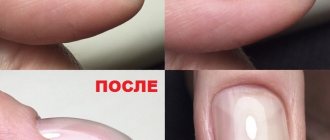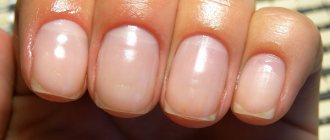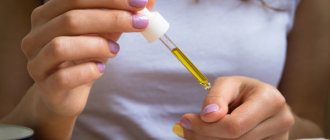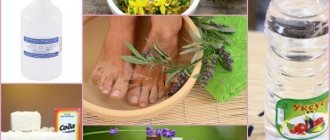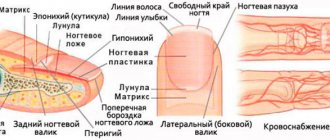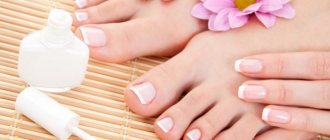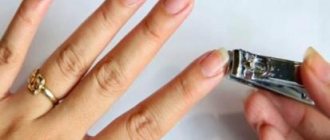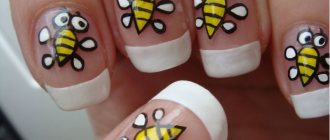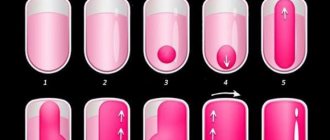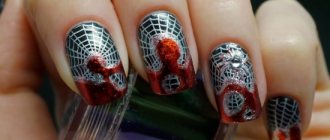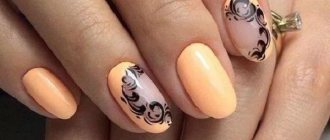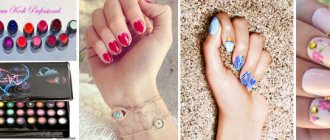No one will argue that extended nails are fashionable and beautiful. But there is also the other side of the coin - the protective layer on the nails ceases to be produced, and the nails can suffer even from normal environmental exposure.
How to restore nails after extensions? Colady will tell you about 10 traditional methods of restoring the nail plate safely and painlessly.
Pexels Photos
Benefits of Nail Softening
Softening the nail plate, carried out even at home, is a full-fledged cosmetic procedure that has a number of advantages:
- Maintain hygiene of both the nail plate and the soft tissues of the fingers around the nail.
- Easy nail cutting.
- It is much easier to give a less dense nail the desired shape (for example, with corners to prevent the nail from growing into the periungual ridges).
The additional use of antiseptic and antifungal compounds allows you to quickly get rid of pathogenic bacteria and fungi.
How to use oil correctly
It is recommended to take care of your cuticles every day, preferably in the evenings, when all your work is behind you. All that is necessary is to apply 1-2 drops of the product around the nail and gently rub into the skin until completely absorbed.
For the oil to work effectively, it is important to prepare the skin for care in a timely manner:
- after washing your hands, use a special brightening peeling;
- regularly take cosmetic baths with preparations to soften the skin;
- Use a revumer about twice a week to remove overgrown cuticle edges.
These procedures will help you create a neat, aesthetic manicure. It is necessary to apply oil at the last stage, after shaping the cuticle and nails.
The duration of care is determined individually. The basic course is usually about 4 weeks. Using oil is useful not only for fingernails, but also for foot care, especially after the winter season and wearing tight closed shoes. The product will significantly soften the skin, prevent fungal infections and abrasions, and help prevent ingrown nails.
Pharmacy or home remedies
Which means to give preference to - homemade or pharmacy - remains open to this day.
Industrial pharmaceutical solutions, ointments, creams are made strictly according to the recipe, have clear instructions for use, and are purchased in a convenient form (tubes, bottles). But even with the help of homemade compositions, you can achieve the desired result using a compress kit, a small container of sufficient volume.
Every pedicurist or ordinary user should read reviews of the products of the most famous pharmaceutical companies in order to make a decision on purchasing a product for softening the nail plate. You can also find useful tips from experts on how to soften your nails for trimming.
Why is nail restoration required after extensions?
The nail extension procedure is a process in which the length of the nail is artificially increased. The main purpose of nail extensions is to eliminate existing defects of the nail plate, namely:
|
Initially, the procedure for nail extensions arose back in 1960 in the USA , when a dentist tried to “fix” a broken nail with acrylic. The extension technology is based on the polymerization reaction, that is, the hardening of the material under the influence of ultraviolet rays. In the process of artificial nail extensions, additional materials may be used, such as:
|
Modeling nails using forms
The main essence of the procedure is applying a gel to the surface of a natural nail, which tends to harden under ultraviolet light. Before the procedure is carried out, the master must consult the client about safety measures, the nuances of using artificial nails , as well as the properties of the gel. It is worth remembering that the removal of artificial material occurs by sawing off the gel with a special tool (milling cutter) or file. The procedure is not as harmless as many people think, because after laying the gel on the nail, the access of oxygen to natural tissues is partially blocked, which can affect health.
Properties of the gel, is it harmful?
A fairly popular and frequently used material for artificial nail extensions is light-curing gel . Such material tends to harden under the influence of ultraviolet rays, which in small doses do not harm human health . Gel for strengthening and extending nails is a synthetic substance of varying consistency. The main components of the gel are methacrylic acid derivatives and pine needle-based polymers, which harden to form a solid polymer material. Compared to acrylic, gel is a ready-made material for use.
Advantages of the material:
| Disadvantages of gel extensions:
|
Basic compositions for the procedure
At home, a softening procedure is carried out with compounds that do not cause skin irritation, have a quick effect, and have an antiseptic effect. How to soften your nails at home:
- Using a soda solution.
- Using medicinal baths with the addition of essential oils and herbal infusions.
- Compresses with various components (aloe, honey, olive oil) for high-quality softening of the nail plate.
To carry out such a cosmetic procedure, you should additionally prepare a container (basin) for the feet, a soft towel, and moisturizing cream for the feet.
Available recovery methods
The oldest and most proven remedy that is always at hand is kitchen salt . Ideally, you should also keep a marine one at home, which is widely used in caring for your appearance. It is very useful to simply stir a spoonful of this mineral in a glass of warm water and steam your hands there. It’s even better to use iodized salt, which not only can strengthen nails at home, but also saturate the body with an essential mineral that is very important in metabolic processes - iodine, especially from the lack of which nails that have been extended with acrylic suffer.
Nail restoration
"Resuscitation" measures:
- baths with sage and chamomile;
- salt lotions and salt water baths;
- You can restore a nail after extensions using aloe, but it must be applied very often.
You can also massage your hands with salt. Then the skin will become soft and tender, and your own nails will regenerate faster. To do this, you need to mix a small spoon of salt with lemon, orange or grapefruit oil, and lightly rub the plate and fingers with this mixture.
Although they say that after extensions with gel, nothing will happen to your nails, they breathe and still grow, you still need to lubricate them with lemon juice . This is a universal recipe for lazy people, you don’t even need to squeeze out the juice, you can just cut off a slice and moisten the plate with it.
These procedures should be done alternately with oil baths and massages. Firstly, in any case, the complex is better than single sessions, and secondly, almost all home methods for restoring nails after extensions contain, if not cosmetic oils , then at least ordinary sunflower oil.
A homemade replacement for paraffin therapy is simply lubricating the nails with wax . Cheap and cheerful, the enamel is restored very quickly, and a week after gel extensions, your nails are like new. In order to do this, we need a little cosmetic wax, orange or lemon essential oil (can be replaced with regular lemon juice) and a bowl of warm water. Lubricate your hands with wax and begin massaging for 20 minutes, then wash off with warm water, repeat every three days.
Classic soap and soda solution
Recipe for making a classic soap-soda solution:
- Add 15 grams (about 1 teaspoon) of baking soda to 1 liter of water.
- Additionally, laundry soap is grated.
This composition has good antiseptic properties, quickly cleansing the skin and periungual plate from bacteria and pathogenic fungi. In addition, this recipe is easy to make at home and affordable.
Homemade nail oil
- Healing effect: take 5 drops of almond and olive oils or coconut and peach oils, 3 drops of lavender and tea tree oils. Vitamin E capsule.
- To soften cuticles, strengthen and grow the nail plate: jojoba or castor oil (7 drops), lemon (4 drops), rose moschetta (3 drops), ylang-ylang (1 drop) plus vitamin E capsule.
- Antiseptic and soothing effect for hands: mix 3 drops each of tea tree and lavender oils with 15 milliliters of base oil.
- To moisturize the skin and strengthen and grow the nail: take coconut and peach oils (10 milliliters each), castor oil (5 drops), add 3 drops each of cucumber and orange oil.
For an excellent healing and nourishing effect, you can also use one-component products (for example, castor oil, tea tree oil, celandine oil or peach oil). Just apply any of the listed essential oils to your nails and after a few minutes, remove the residue with a napkin. There is no need to wash off the product.
Therapeutic baths with essential oils
Essential oils today are used quite widely in cosmetology, in particular, for pedicures and manicures. The most famous oils are lavender, tea tree, orange, rosemary.
These oil solutions contain a high concentration of phytoncides that have an antiseptic effect. If the temperature and duration are observed (the normal duration of one procedure is 15 minutes), the nail plate quickly becomes soft and pliable, which allows you to easily trim the outer edge.
The advantages of choosing this technique include the positive vasodilating effect that oil solutions have. Improving blood circulation in the skin of the feet is the key to healthy feet for every person.
Infections after nail extensions
When using non-sterile tools for nail extensions, various types of infections may appear that violate the natural integrity of the natural nail. When the gel or acrylic layer on the nail is damaged, a small gap (air gap) appears, which is an ideal environment for the proliferation of pathogenic fungi and microorganisms. If the damaged nail is not freed from the artificial layer, this can lead to negative consequences.
gribok-nogtej-pod-gelevim-nogtem
It is worth remembering that even after high-quality extensions, the nail plate weakens significantly , which increases the risk of infection with many fungi and infections. If you find a damaged nail, it is recommended to go to a salon or remove the artificial layer yourself using a file. Treatment of fungal infections takes a fairly long period of time, which averages 6 months. If you do not consult a doctor in a timely manner, there is a high probability of losing your own nail and damaging the soft tissues of the hands. Manicurists and doctors advise constantly monitoring changes in the color and structure of the nail plate.
Solutions and decoctions of medicinal herbs
Another well-known way to soften the big nail (the most problematic area of the foot) is to use hot baths with herbs. In practice, both herbal and one-component compositions can be used.
The most famous solutions that have additional antiseptic properties are decoctions of chamomile, thyme, sage and fresh milkweed.
Sunflower oil
Nail oils
Another effective and very affordable product from your local supermarket is sunflower oil for nails. It is mainly used as a base or base oil for various masks and baths. Due to its rather unpleasant and recognizable smell, using it in its pure form may not be very comfortable. In addition, since it is quite greasy, even after quite a long time after application, your fingers can leave greasy marks on the surface and papers.
Essential oils to strengthen nails
However, it is indispensable in baths. So, to a teaspoon of this oil you can add a couple of drops of sage, chamomile and lavender oils. Lavender can be replaced with lemon oil in the same proportion or double the volume of eucalyptus oil. You can add 4 drops of sage, lavender and eucalyptus oils to the oil. Such components not only increase the effectiveness of each other as a whole, but also fight off the unpleasant odor of sunflower oil.
Compresses with aloe and butter
Another interesting way to soften a nail for cutting. The basis of such a compress is aloe juice and butter in equal percentages. The presence of a large amount of fats and aloe plant serum makes this composition an indispensable assistant in everyday life and cosmetology.
A compress applied to the toes for 8-10 hours thoroughly removes rough areas of the stratum corneum, softens the cuticle and the nail plate itself.
Properties of ylang-ylang oil beneficial for nails
Ylang-ylang is a tropical tree known for its vibrant flowers. The magical properties of their aroma, which can improve mood, were discovered at the end of the 19th century. Later, other valuable qualities of the essential oil of this plant were discovered. It contains substances that can have a sedative, antiseptic, antifungal, regenerating effect, improve skin microcirculation, and enhance tissue nutrition.
Cosmetologists could not leave such a valuable product unnoticed. Ylang-ylang oil is used to treat acne and to strengthen and grow hair and nails. It helps not only to compact the nail plate, prevent its delamination, accelerate growth, but also protect against the harmful effects of bacteria and fungal infections.
Rules for using essential oils in cosmetology
Ylang-ylang oil, like any other essential oil, can cause allergies and other negative reactions in the body. Therefore, when using it you need to follow several rules.
- The oil should be used with caution, after testing on a small area of skin. To do this, mix a drop of the product with a few drops of vegetable oil, apply to the skin around the wrist and wait 15 minutes. If there is no irritation on the skin and you do not feel any other allergic reactions, the oil can be safely used. If a cosmetic product contains several essential oils, then it is advisable to test the product itself immediately.
- Due to the high activity of the components in essential oils, it is not recommended to use them without dilution in transport oil. Almond oil, which usually does not cause allergies, apricot oil, which has a beneficial effect on the skin and nails, jojoba oil, which increases the protective properties of the skin, and nourishing wheat germ oil are often used as a base oil. The concentration is selected depending on the components used, the nature of the mixture and the desired effect. The proportions will be given in the recipes.
- You should not increase the exposure time of the product with ylang-ylang essential oil relative to the recommended one.
- Always check the expiration date of the product before use. Do not take risks by using an oil of which you are not sure of its quality.
Additional tip: use a pipette or syringe to mix oils, this will allow you to measure the ingredients as accurately as possible. This advice is especially relevant if the dosage in the recipe is indicated in milliliters.
Compresses with honey to soften the nail
Another popular method to make the nail plate soft and pliable is to use a long-term compress for the foot, which includes:
- Honey.
- Olive oil.
- Sour cream (it is better to use richer sour cream to achieve the proper level of fat in the compress).
The final ingredient is freshly squeezed lemon juice, the acid in which destroys strong bonds in the horny layers of the old nail plate. It is recommended to use similar techniques for ingrown toenails, to thoroughly soften the plate in older people, after wearing tight shoes for a long time.
After removing the compress, it is recommended to wipe the skin dry with a soft cloth (for the last method, wash off the lemon juice), treat the skin of the foot and nail plates with moisturizing cream.
How to restore nails after extensions using cosmetics?
You need to pay attention to the composition of the cosmetics you use. Cosmetics containing acetone and formaldehyde are dangerous. These products dry out already weakened and dehydrated nails. At the same time, don’t forget about your legs.
If nail extensions have led to thinning, then oils with plant extracts and vitamins (A, E), as well as base coats, will help restore lost beauty and health. The oil strengthens and nourishes the nails, and the coating protects from negative external influences.
Please note that restoring legs after extensions is pointless if you do not allow them to take a break so that they can rest from the polish. Dermatologists and manicurists recommend taking breaks at least overnight. In the evening you need to remove the old coating and apply a new one in the morning. Before going to bed, you need to massage your nails with oils or moisturizer.
Essential oil mixtures are very effective. To prepare them, you can use base oils: avocado, almond, jojoba and wheat germ. To one teaspoon of any of these oils you can add 2-3 drops of essential oil: cedar, frankincense, bergamot, sandalwood, ylang-ylang, myrrh, patchouli or pine essential oil. The mixture of these oils strengthens fragile and flaking nails. The prepared mixture must be rubbed into the nails, and the remains should be blotted with a napkin.
Cosmetic companies offer a huge selection of base coats. Thus, the well-known company Sally Hansen offers a product for strengthening nails Nail Protex, enriched with vitamins B5 and E. Apply a base coat under the varnish and then on top of it. You can use the product without varnish, applying it in two layers.
The American company OPI has released a nail nourishing product, Original Nail Envy, with a unique formula containing calcium, wheat proteins and vitamin E. The product should be used daily for two weeks, and after restoration of damaged nails - for prevention as a basic remedy.
The cosmetic company Trind Cosmetics BV recently introduced pink pearl (Pink Pearl) and white pearlescent (Pure Pearl) nail healing product Trind Nail Repair Color, which makes nails strong and elastic.
Those who prefer natural nails without various coatings can use BeYu Fresh Melon Nail Butter cream oil to strengthen them. Shea butter and almond oil, which are included in the product, make brittle nails hard. BeYu Fresh Melon Nail Butter cream oil has a pleasant melon aroma.
Use of pharmaceutical products
The need for preliminary softening of the nail plate is often associated with the presence of an ingrown nail, fungal disease of the toes, or significant vitamin deficiencies.
In such situations, cosmetologists and dermatologists recommend using industrial products to give the plate the required elasticity and pliability.
The practical choice of a drug depends on the presence of pathology and the growth characteristics of the nail plate:
To soften an ingrown toenail, it is better to give preference to Vishnevsky ointment, which is applied to the toes as a compress at night. Castor oil, which is part of the liniment, expands the pores of the skin and horny plate, allowing the remaining components to quickly penetrate the tissue.
Birch tar dramatically increases the regeneration of tissues and cells.
For fungal diseases, a whole line of ointments with antifungal components is used, which are applied to the affected nail plates.
For difficult cases, when the nail plate is significantly thickened (due to fungal infection), first apply a compress with iodine, glycerin and vinegar essence in equal parts (this method quickly softens the nails).
The main principle for such a technique is not to affect healthy tissues and periungual ridges, because the essence can cause irritation and physical discomfort.
All procedures to soften nails with fungus and ingrown plates should be carried out only after the diagnosis has been clarified by a dermatologist.
Therapeutic varnishes and compositions for nail restoration
Therapeutic varnishes and compositions for nail restoration are used to restore damage, as well as for prevention. Varnishes can be used as an independent coating. They contain vitamins, valuable oils, and plant extracts. The use of varnishes provides nutrition, protection and restoration of nails.
The following types of strengthening varnishes exist::
- Strengthening. Gives nails a healthy look and eliminates brittleness.
- Restorative. Its main function is to accelerate regeneration.
- Antifungal. This is a medicinal drug aimed at treating fungal infections. This drug should be used as prescribed by a podologist or dermatologist.
- Varnish conditioner. The product moisturizes, eliminates fragility and delamination.
- Complex. These are varnishes that have a complex effect - moisturizes, strengthens, stimulates growth.
List of popular medicinal varnishes:
- Smart enamel from Frenchi. The varnish contains calcium, a set of vitamins, silk proteins, keratin and other useful substances. The varnish gives the nail plates elasticity and moisturizes. The disadvantage, according to consumers, is that the varnish quickly thickens and you have to buy a new bottle without completely using the previous one.
- IQ Beauty Hi-Speed Hardener polish. It is made on a water basis and contains silicic acid, minerals, vitamins, and plant extracts. Strengthens well, dries quickly, lasts a long time. With regular use, it accelerates growth. Significant disadvantages of varnish include the formaldehyde content in it.
- Healing polish from Sally Hansen – Hard as Nais Xtreme Wear. This is a water-based product containing bioactive glass, calcium, and titanium. Available in different shades, can be used as a base coat. However, the varnish does not adhere well, the coating quickly fades and cracks.
- Restoring varnish from Trind Nail Caring Color. Contains vitamins and nourishing oils. The varnish is available in a wide variety of shades. Contains formaldehyde.
Photo tips on how to soften nails
Nail care rules
- The first rule is regularity. It's like in the gym, if you work out haphazardly, there will be no effect.
- Do not choose iron files for manicure. Glass or ceramic nail files work well. You need to file the nail in one direction, otherwise it will start to peel.
- Watch the length of your nails. Reaching a certain length, they often break and flake, every girl notices this. Trim your nails promptly and smooth out sharp corners with a nail file.
- Pay attention to the color of your nails and whiten them regularly, but no more than 7 days in a row. Lemon works well for such purposes.
- Do the nail baths and treatments we talked about today.
- Monitor the condition of the cuticle, lubricate with oil and massage. It is not recommended to push back the cuticle, much less cut it, because it protects the nail from infection.
- Nails should take a break from polish and nail extensions.
- Do exercises with your fingers. This will improve blood flow and nutrition of the nail, and accelerate growth. If you type on a keyboard, that's great, if not, tap your fingers on the table.
Oils for nail growth and strengthening
Home Nails
Good for those who naturally have beautiful hair and nails! They can do fashionable hairstyles and manicures as much as they want, and not rack their brains about what to buy at the pharmacy so that their strands and nails also begin to at least slightly resemble a picture from a magazine... Are you not one of them? Or were your nails beautiful, but a bad manicure “killed” them? Read on!
Have you tried using oils? They are often bought for hair (this gift of nature perfectly moisturizes the strands, nourishes and heals them). Nourishing oils for nails are also suitable! They soften the cuticle, nourish the plate, and strengthen it, preventing it from breaking and peeling, and they also protect it from fungus. And besides, by applying this product to your nails, you won’t have to listen to your loved one about “horrible odors throughout the apartment,” as when painting your nails with varnish. Oils are applied before bed so that while you rest, they take care of your relaxed hands. First, warm up the oil a little, then, dipping a brush into it, treat all the nails. Well, to prevent the pillow and blanket from being damaged by these manipulations, wear gloves, or even better, wrap your hands in cling film.
Which nail oil is best?
Your nails will be “to your taste” in everything from ethereal to ordinary. Each oil has a unique set of beneficial substances. Among the esters, you can opt for lemon or tea tree oil. For cosmetics - almond, burdock, avocado, flaxseed, jojoba, nut or olive.
Castor oil
It is ideal for growing nails and also taming rough cuticles. If you cut yourself while trimming the supra-nail plate, take out the bottle again - this oil heals wounds well, soothes inflammation, strengthens the skin and nails.
Oil can be used not only in its pure form. Mix it with avocado, jojoba, and tea tree oils - and you will see how much the effect of this natural remedy is enhanced. And besides, it goes well with “kitchen” olive and sunflower oil. Mix these three products, soak your nails in the resulting “bath” for 15 minutes, and rinse off any remaining oil under the tap. Result: smooth surface of the nail plate, treatment of brittleness and delamination.
Don't have time for long-term care? Just drop this oil into your hand cream.
Almond oil
It will save delaminated plates and strengthen them. But be prepared to use it often, twice a day, vigorously rubbing. And don’t skimp, lubricate your hands with it too, especially if the skin needs nutrition and moisture. When your nails are cured, don't hide the bottle too far: treat your nails with oil after each manicure to prevent peeling.
Jojoba oil
Helps to “sand” an imperfect nail plate, glue splits and reduce fragility. But before use, the oil must be enriched with pharmaceutical vitamin E (liquid). Rub the oil into the nail, then treat it with the above-mentioned vitamin - the oil will enhance its effect. Treat your nails this way in the morning and evening, protecting your hands with rubber gloves when going to wash the dishes.
Balm for night application: 2 teaspoons of jojoba oil, 3 drops of lemon juice, 2 drops of rose essential oil.
Burr oil
Restores and moisturizes both nails (especially after extensions) and dry hand skin. If you are very unhappy with your nails, rub this oil twice, or even better, three times a day, not only into the plate, but also into the cuticle. If you don’t have time for such care, take baths: once a week, warm up the oil and “bathe” the tips of your fingers in it.
Peach oil
This is protection, nutrition and restoration in one bottle. It is with this care that you will get “salon”, shiny nails at home. Important: apply the oil as generously as possible - not only on the nail, but also on the cuticle and fingertips. By the way, another useful property of this oil is considered to be “sanitation” and prevention of fungus.
To strengthen your nail, massage it every day with a cotton swab dipped in oil.
For urgent “repair” of damaged nails, mix 1 large spoon of peach oil, 3 drops each of lavender, lemon and eucalyptus esters. Every day, morning, afternoon and evening, massage your nails for 15 minutes.
Avocado oil
Strengthens, cares, does not give “life” to inflammation around the nail, moisturizes and softens the cuticle. In general, it is often purchased by manicure lovers.
To prevent your nails from breaking, give the plate a little massage with this oil before applying colored polish. You can use the oil undiluted, or as a mixture: 5 drops of lavender, patchouli, rosemary oils, 2 large spoons of avocado oil, 5 drops of fresh lemon juice.
If your hands are prone to painful hangnails or you were cut while removing cuticles, add a little (just a couple of drops) of eucalyptus or chamomile oil to avocado oil - this remedy will quickly heal the wounds.
To strengthen your nails, combine avocado oil with olive or almond oil.
Linseed oil
It is used undiluted, as well as in combination with other oils (1:1 proportion or another - say, 1 spoon of flaxseed “base” + 3 drops of lavender, eucalyptus, lemon). “Loves” this oil and esters, primarily chamomile, thyme, lavender, patchouli, rosemary. Any of these products must be rubbed first into the skin of the hands and then into the nails.
Healing ointment: 1 large spoon of flax oil, the same amount of honey, yolk (raw), juice squeezed from a medium lemon. Wash your hands in water drained from boiled potatoes, apply ointment to your hands, cover your hands with gloves and do not take them off for 3 hours.
Citrus oil
It not only protects and strengthens the plate, but also whitens it and gives it a well-groomed shine. Rub the oil into your nails more often or take oil baths. By the way, you can use fresh juice instead of butter.
This is also a means for increasing the tenderness of the cuticle, restoring wounded skin, as well as cuticles cut after a manicure; it is also an antiseptic that saves against local infections and inflammation.
It is advisable to mix lemon oil with other natural products - oils, iodine, pharmaceutical vitamins (liquid), honey. But don’t forget: this oil dries out the nail plate, so you shouldn’t get carried away with it.
Olive oil
Pay attention to it if you want to stop “breaking” your nails and finally grow them back. Hand masks are often made with this oil.
Nut.
This is a complete concentrate of useful substances, because such oil is extracted from the shell. The effect of this “strong” oil is visible after just 1 application. It strengthens, nourishes nails, and adds external beauty to them. Apply a little on each plate twice a day.
Celandine oil.
This is a medicine that has antifungal and antibacterial effects.
Cucumber and coconut oils.
Maximum moisturize and “vitaminize” nails.
Wheat.
The main effect is moisturizing, so it is also suitable for the skin.
Essential oils for nails
They are not applied in pure form, but dripped into “base” oils, fattier ones: olive, apricot, almond, castor oil. 2-3 drops of ether are added to a large spoon of the “base” (and there can be several of them), as well as vitamin E, if desired. The result is masks or nail baths.
To strengthen and “grow” your nails, buy ether of sandalwood, pine, and cedar. And to get rid of fungus and inflammation, choose essential oils of rosemary, lavender, eucalyptus, and tea tree.
Go to section: Fashionable manicure and nail care
Fashion trends in manicure this season: new items |
Kamifubuki: fashionable nail design ideas |
How to grow long nails quickly |
Knitted manicure “Sweater”: stylish DIY patterns |
Nail design "Cat's eye": how to do it, photo gallery |
Nail design with “broken glass” effect |
The perfect DIY manicure |
Lunar calendar of manicure and pedicure by month: favorable days |
Essential oils for nails: medicinal properties, recipes for masks and baths |
French manicure: do it yourself |
